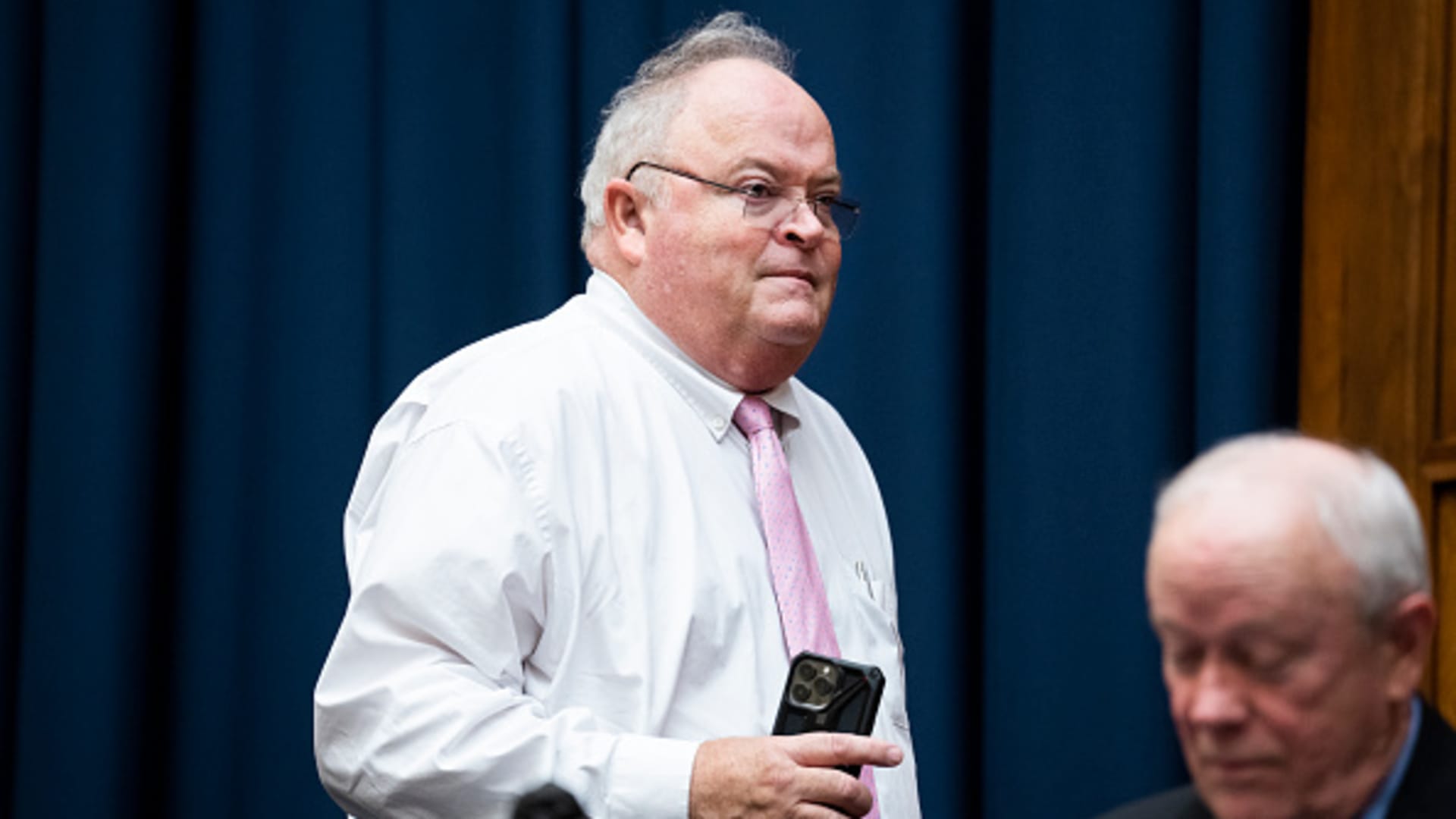Pekic | E+ | Getty Images
Mortgage rates seem to have steadied. That may be a good sign for the market, experts say.
The average 30-year fixed rate mortgage in the U.S. slightly dipped to 6.78% for the week ending Nov. 14, barely changed from 6.79% a week prior, according to Freddie Mac data via the Federal Reserve.
“Even though it’s higher than it has been over the course of several weeks, it’s probably good news for homebuyers,” said Jessica Lautz, deputy chief economist and vice president of research at the National Association of Realtors.
“When rates are moving around a lot, it makes a lot of uncertainty in the market,” Lautz said.
Mortgage rates declined this fall in anticipation of the first interest rate cut since March 2020. But then borrowing costs jumped again this month as the bond market reacted to Donald Trump’s election win.
While the president-elect has talked about bringing mortgage rates down, presidents do not control borrowing costs for home loans, experts say.
Instead, mortgage rates closely track Treasury yields and are partially affected by what happens with the federal funds rate.
“They foresee inflationary policies, whether it’s tariffs or greater government spending, the tax bill … they’re pricing in more inflation,” said James Tobin, president and CEO of the National Association of Home Builders. “As the bond market reacts, mortgage rates are going to react to that, too.”
More from Personal Finance:
What Trump’s presidency could mean for the housing market
Credit card debt hits record $1.17 trillion
Here’s the inflation breakdown for October 2024
Less volatility can be a good sign, said Chen Zhao, Chief economist at Redfin, an online real estate brokerage.
“High volatility by itself actually pushes mortgage rates even higher above treasury yields,” Zhao said. “More stable rates also means that homebuyers don’t have to worry during their home search about what their budget allows for changing.”
Trump’s team did not respond to a request for comment.
Don’t expect ‘huge swings’ on mortgage rates
Election uncertainty contributed to an upward swing in mortgage rates during October. Then rates went up even more last week as the stock market and yields reacted to the election results.
The 10-year Treasury yield jumped 15 basis points on Nov. 6, closing to trade at 4.43%, hitting its highest level since July, as investors bet a Trump presidency would increase economic growth, along with fiscal spending. The yield on the 2-year Treasury was up by 0.073 basis point to 4.276% that day, reaching its highest level since July 31.
But now that we have a president-elect, mortgage rates are expected to gradually come down over time, Lautz said.
From a monetary policy standpoint, future rate cuts are up in the air. Federal Reserve Chairman Jerome Powell said on Thursday that strong U.S. economic growth will allow policymakers to take their time in deciding how far and how fast to lower interest rates.
If the Fed continues to ease the federal funds rate, it could provide indirect downward pressure on mortgage rates, according to NAHB chief economist Robert Dietz.
“However, improved growth expectations would lead to higher rates, as would larger government deficits,” he said.
Experts say that mortgage rates might head into a “bumpy” or “volatile” path over the next year.
“I don’t think that there’s going to be any huge swings down into the 5% range,” Lautz said. “Our expectation is that rates are going to be in the 6% range as we move into 2025,” she said.
How buyers, sellers and homeowners can benefit
Rates that are trending lower can present an opportunity for buyers who have been house hunting for a while, especially as the winter season kicks in. Competition tends to slow down in the winter months in part because homebuyers with kids are in the middle of the school year and reluctant to move, Lautz explained.
Our expectation is that rates are going to be in the 6% range as we move into 2025.
Jessica Lautz
Jessica Lautz, deputy chief economist and vice president of research at the National Association of Realtors
Current homeowners can also make the most of lower rates.
For example, if you bought your home around this time last year, when mortgage rates peaked at around 8%, you might benefit from a mortgage refinance, Lautz said.
It “makes sense” to consider a refinance if rates have fallen one to two points since you took out the loan, Jeff Ostrowski, a housing expert at Bankrate.com, told CNBC after the Fed’s first rate cut this fall.
Remember that a loan refinance isn’t free; you may incur associated costs like closing costs, an appraisal and title insurance. While the total cost will depend on your area, a refi is going to cost between 2% and 6% of the loan amount, Jacob Channel, an economist at LendingTree, said at that time.
If you’re pondering on whether to refi or not, look at what’s going on with rates, reach out to lenders and see if refinancing makes sense for you, experts say.
Homeowners have earned record home equity. U.S. homeowners with mortgages have a net homeowner equity of over $17.6 trillion in the second quarter of 2024, according to CoreLogic. Home equity increased in the second quarter of this year by $1.3 trillion, an 8.0% growth from a year prior.
If you’re looking to sell your current home, you may be able to counteract slightly high borrowing costs on your next property by placing a larger down payment, Lautz said.


 Economics1 week ago
Economics1 week ago
 Economics1 week ago
Economics1 week ago
 Personal Finance6 days ago
Personal Finance6 days ago
 Economics5 days ago
Economics5 days ago
 Economics1 week ago
Economics1 week ago
 Personal Finance1 week ago
Personal Finance1 week ago
 Personal Finance1 week ago
Personal Finance1 week ago
 Economics4 days ago
Economics4 days ago









